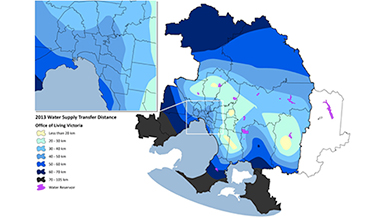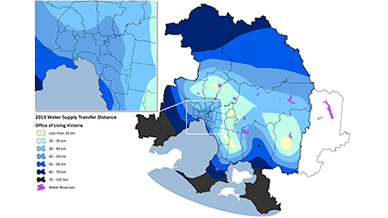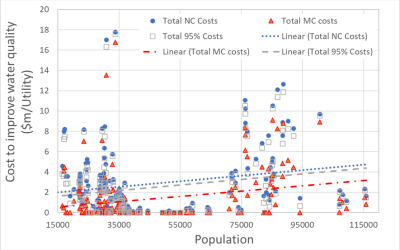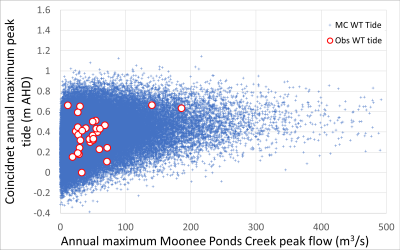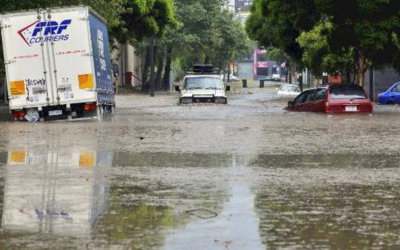This paper provides a snapshot of the integrated systems analysis of the Greater Melbourne region used to provide evidence for the Ministerial Advisory Council for the development of the Living Melbourne Living Victoria water policy. The systems analysis was built on local scale (the people) inputs (a “bottom up” process) rather than traditional analysis of metropolitan water resources that commences with regional scale assumptions (a “top down” process). This process has revealed a range of challenges and opportunities in the Australian water industry that were hitherto obscured by traditional analysis techniques.
An integrated systems approach was employed to analyse the performance of integrated water cycle management Options throughout the Greater Melbourne region. The Options were determined to generate understanding of the response of the water cycle systems within Greater Melbourne to alternative strategies and to subsequently inform decision making for water policy. This process was used to underpin the investigations of the Ministerial Advisory Council as a basis for the implementation of the Living Melbourne, Living Victoria policy for water reform. The Options considered in this study provides a range of key insights.
The existing system (BAU) is critically dependent on (or sensitive to) variations in climate and population and building scale Options substantially mitigate the challenges of variable population and climate. The precinct scale Options almost eliminate the challenges of variable population and climate. Importantly, the alternative Options operate at multiple spatial, temporal and dimensional scales to generate reductions in water demands, wastewater generation and stormwater runoff, the cost of providing water and wastewater services, and the transfer costs of providing water and sewage services.
The integrated systems analysis was built on local scale (the people) inputs (a “bottom up” process) rather than traditional analysis of metropolitan water resources that commences with regional scale assumptions and averages (a “top down” process). This process has revealed a range of challenges and opportunities in the Australian water industry that were hitherto obscured by traditional analysis techniques. For example, the full cumulative costs (and benefits) of projects for water cycle management across an entire system are not currently considered. There is a need to avoid lumpy investment processes in large scale external infrastructure and to minimise the total distances involved in the transfer of water, stormwater and wastewater throughout Greater Melbourne in water cycle planning and design of infrastructure.

